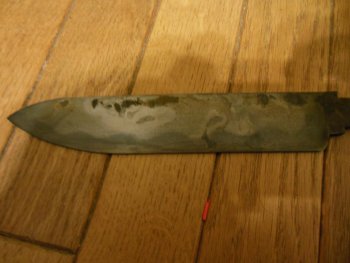Owen Vernon
Well-Known Member
Went to David Roeder's house this morning with the plan to forge some blades. So I had a number of steel bars cut to length and I picked up the 1095 and decided to try it. Granted this took me forever to forge but it shaped up pretty well. I'm needing lots of time on the hammer and anvil but I had a scatterbrained idea to make a hamon this time. I did lots of reading and settled on what sounded the easiest and from a well respected member of this forum Bubba-San. I used his equal parts activated charcoal, crushed sandstone, clay recipe and quenched in oil. So did a quick search found activated charcoal is used for auqarium filters. Off to Petco got that needed crushed sandstone Home Depot next door scored a bag of playground sand lol. They didn't have clay type oil dry so off to the AutoZone found 100% clay floor dry. Had to crush the charcoal pellets with a hammer to get it closer to dust. LOL then mixed the other 2 ingredients kinda sorta shook it about to bring the larger rocks to the surface picked out what I could and added water. Mixed it a bit and picked up a small twig from the yard and began blobbing the mixture on the blade keeping in mind the warnings about evenness from side to side and lengthwise and let it dry then put it in the fire. It worked..
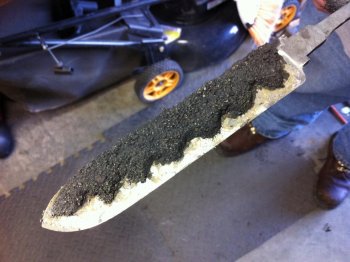
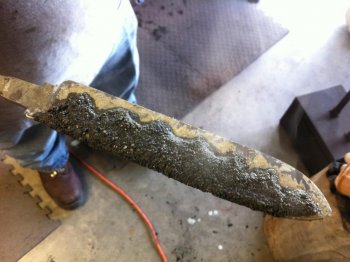
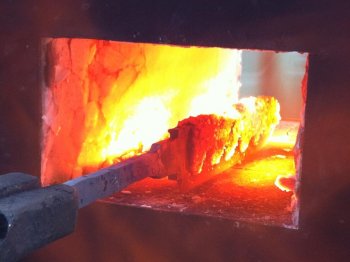
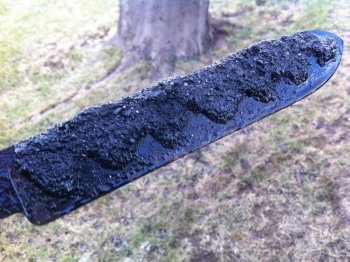
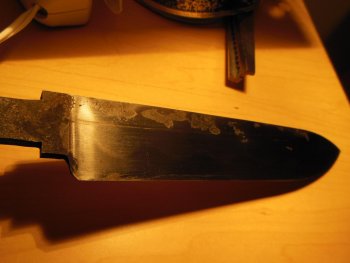
It did develop a crack about 3/8 from the tip so I reground and reprofiled but all seems well.
Also I did a differential tempering with a torch but have been told that it is counter productive and should have used an oven set somewhere between 400 - 450 deg to do the tempering. For how long and how many times if anybody knows?





It did develop a crack about 3/8 from the tip so I reground and reprofiled but all seems well.
Also I did a differential tempering with a torch but have been told that it is counter productive and should have used an oven set somewhere between 400 - 450 deg to do the tempering. For how long and how many times if anybody knows?
Last edited:


